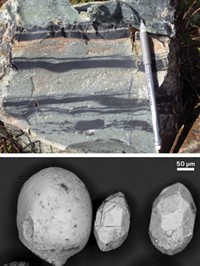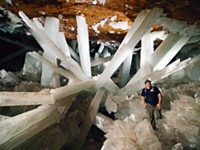Advertisement
Grab your lab coat. Let's get started
Welcome!
Welcome!
Create an account below to get 6 C&EN articles per month, receive newsletters and more - all free.
It seems this is your first time logging in online. Please enter the following information to continue.
As an ACS member you automatically get access to this site. All we need is few more details to create your reading experience.
Not you? Sign in with a different account.
Not you? Sign in with a different account.
ERROR 1
ERROR 1
ERROR 2
ERROR 2
ERROR 2
ERROR 2
ERROR 2
Password and Confirm password must match.
If you have an ACS member number, please enter it here so we can link this account to your membership. (optional)
ERROR 2
ACS values your privacy. By submitting your information, you are gaining access to C&EN and subscribing to our weekly newsletter. We use the information you provide to make your reading experience better, and we will never sell your data to third party members.
Analytical Chemistry
Slower Than A Snail’s Pace
Geochemistry: Scientists estimate that Mexico’s giant gypsum crystals took up to 1 million years to reach today’s size
by Stephen K. Ritter
September 14, 2011

Scientists studying the geochemical processes at play in the formation of giant gypsum crystals (CaSO4•2H2O) found in Mexico’s Naica ore mines have determined that these natural wonders grow much more slowly than a snail’s pace. Using a specialized microscope, they observed that the largest specimens—up to about 35 feet long and 3 feet thick and with a mass of 55 tons—took as long as 1 million years to reach their current size.

Naica’s giant crystals were discovered over the course of the past century in water-filled caverns uncovered at mining sites. Earlier research on the crystals indicates that they formed slowly at a temperature range of 54 to 58 °C from warm, CaSO4-saturated water heated by magma below. Similar giant gypsum crystals have been discovered in Chile and Spain.
To study the crystals, a team led by Juan Manuel García-Ruiz of the University of Granada, in Spain, cleaned a chunk of one of the giant crystals to activate growth sites and then immersed it in mineral-rich water from the Naica site. The researchers then watched the crystals grow by using a white-light phase-shift interference microscope they developed—a type of high-resolution interferometer (Proc. Natl, Acad. Sci. USA, DOI: 10.1073/pnas.1105233108).
The crystal growth proceeds slowly because the chemical equilibrium is barely shifted in favor of crystal growth over gypsum solubility, the researchers note. The slowest measureable growth rate of about 16 femtometers per second occurred at 55 °C. The researchers believe that is the slowest observed growth rate for any directly measured crystallization process. At that rate it would take about 990,000 years for one of the giant crystals to grow to its current size, they estimate.
At lower temperatures crystals didn’t grow, the researchers found. But at higher temperatures growth rates increase substantially, in part because of decreasing CaSO4 solubility. For example, at 56 °C the same-sized crystal would have formed much faster—in about 500,000 years. At 60 °C it would have formed in 50,000 years.
“Large crystals have fascinated man probably for as long as he has had a sense of art and beauty,” says geochemist Thure E. Cerling of the University of Utah. Scientifically, determining rates of crystal growth is important for understanding the purity of the final product, Cerling says. In the case of the Naica crystals, it shows the importance of the long-term stability of groundwater temperature and chemistry in controlling such slow growth rates, he adds. “The methods demonstrated in this paper may help better understand crystal growth conditions in natural settings, as well as in the laboratory,” Cerling says.





Join the conversation
Contact the reporter
Submit a Letter to the Editor for publication
Engage with us on Twitter